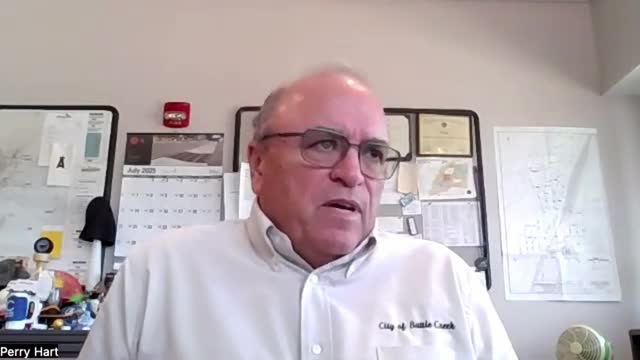City Official Outlines Plan to Separate Aquifers and Reduce TTHM Levels
July 20, 2025 | Battle Creek City, Calhoun County, Michigan
This article was created by AI summarizing key points discussed. AI makes mistakes, so for full details and context, please refer to the video of the full meeting. Please report any errors so we can fix them. Report an error »

In a recent episode of the BC City Connection Podcast, city officials discussed critical updates regarding the Battle Creek water system, particularly focusing on the integrity of the aquifer casings. The meeting highlighted the importance of maintaining a separation between the upper and lower aquifers to ensure water quality and safety for the community.
The discussion revealed that over the past two decades, the casings that protect the lower aquifer have deteriorated, allowing water from the upper aquifer to mix with it. This contamination has led to rising levels of total trihalomethanes (TTHMs), a concern for public health. Officials expressed confidence that once the separation is restored, TTHM levels could return to historic lows.
The casings serve as a crucial barrier, drilled through glacial drift and into solid bedrock, to prevent surface water from infiltrating the lower aquifer. The podcast detailed how recent testing identified holes in these casings, which had gone unnoticed until now. This discovery has prompted a corrective action plan aimed at repairing the casings and restoring the integrity of the water supply.
In addition to the primary focus on aquifer protection, the meeting underscored the city's commitment to addressing water quality issues proactively. The officials emphasized the importance of ongoing monitoring and maintenance to prevent future problems.
As Battle Creek moves forward with these initiatives, the community can expect improvements in water safety and quality, reinforcing the city's dedication to public health and environmental stewardship. The next steps will involve implementing the necessary repairs and continuing to monitor the aquifer systems closely.
The discussion revealed that over the past two decades, the casings that protect the lower aquifer have deteriorated, allowing water from the upper aquifer to mix with it. This contamination has led to rising levels of total trihalomethanes (TTHMs), a concern for public health. Officials expressed confidence that once the separation is restored, TTHM levels could return to historic lows.
The casings serve as a crucial barrier, drilled through glacial drift and into solid bedrock, to prevent surface water from infiltrating the lower aquifer. The podcast detailed how recent testing identified holes in these casings, which had gone unnoticed until now. This discovery has prompted a corrective action plan aimed at repairing the casings and restoring the integrity of the water supply.
In addition to the primary focus on aquifer protection, the meeting underscored the city's commitment to addressing water quality issues proactively. The officials emphasized the importance of ongoing monitoring and maintenance to prevent future problems.
As Battle Creek moves forward with these initiatives, the community can expect improvements in water safety and quality, reinforcing the city's dedication to public health and environmental stewardship. The next steps will involve implementing the necessary repairs and continuing to monitor the aquifer systems closely.
View full meeting
This article is based on a recent meeting—watch the full video and explore the complete transcript for deeper insights into the discussion.
View full meeting
